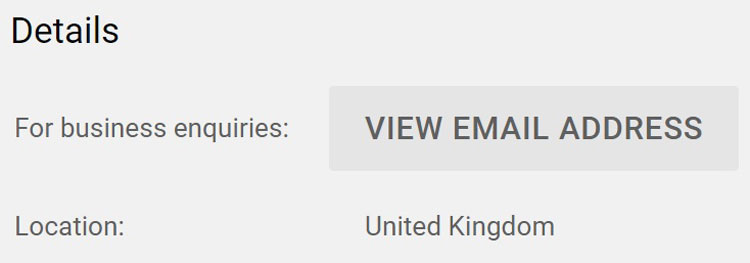One of the most effective marketing strategies for Shopify stores is to create an affiliate program so that other businesses and individuals such as influencers and content creators can promote your products and get paid for it but how do you do this on Shopify?
In this guide, we will go through step-by-step how to create an affiliate program that is going to:
- Generate more sales
- Increase your conversion rate
- Build brand awareness
Step 1: Choosing An Affiliate Marketing App

Shopify doesn’t have the ability to create an affiliate program as one of it’s standard features and to have an affiliate program on your store, you will need to choose an affiliate marketing app and as with everything on Shopify, there are plenty of options to choose from.
But with so many options, how do you choose the best affiliate marketing app for your store? Well, there are a few things to consider, including:
Another thing to consider when choosing an app is:
There are pros and cons to both ways of doing this and once again, it is about finding what works best for your business.
Many of the apps offer more than just affiliate marketing, many also include the ability to add a referral program (so customers can refer friends and family) and features for working with influencers, which can make life a lot easier by being able to manage it all through one app.
Most also offer a free plan or trial so that you can try the app out before committing to a paid plan and it might be worth trying a couple of different options to find the one that works best for you and your business.
We have listed what we think are the Best Shopify Affiliate apps to help you choose.
Step 2: Setting Your Commission Rates

Next up is to plan your commission rates and there is a fine line you need to walk when doing this as they need to work in a way that is financially viable for both parties and this is where you need to really understand your profit margins.
But when it comes to commission rates, there are a number of different options, including:
It really is going to come down to your business and the products you are selling as to what is going to be the best option when it comes to the types of commissions that you offer but how do you come up with commission rates?
One of the best ways to figure out how much you should be paying is to look at what your competition is paying and this can usually be found on their affiliate program page.
Once you have an idea as to what the ‘standard’ industry rates are, you can then set your own and it may be worth offering slightly more than your competition in order to make your affiliate program more attractive.
Step 3: Create Your Affiliate Contract

Once you have decided on how your commission structure is going to work and how you are going to run/manage your program, it is time to create your affiliate contract.
This is because it is a business relationship between two parties and you don’t want some of the more unscrupulous affiliates out there exploiting it for their financial gain which could also damage your business’s reputation.
Each company is going to be different in what is included in the contract but some common things include:
- The affiliate can’t use their own link when making a purchase
- Affiliates can’t promote your link using PPC or Paid Adverts (avoids you competing with them if you run paid ads)
- Affiliates can’t create promotions for your products
Ideally, you want to have a set of rules in place that basically allows affiliates to use your link in their content rather than trying to compete with them on your other marketing channels.
But and this is a very important but, you want to get the contract drawn up by a legal professional who understands the world of online commerce as you want the contract to comply with any rules and regulations to which you have to adhere.
Step 4: Create an Affiliate Page on your Site

By this point, you have got the foundations of your affiliate program in place and now it is time to start marketing it (yes, you need to market your affiliate program).
The very first step of marketing your new program is to create an affiliate page on your site, which should include information, such as:
- The base commission
- Information on assets that are available to help them promote your products
- Who the program is through
- How they can sign up to the program
- Contact details, should they want to speak to you before signing up
Remember, this is effectively a sales page as you are trying to convince people to join your program so don’t skimp on the info or try and get them to contact you to find anything out, this will more than likely put them off.
This is because most affiliate marketers are experienced at this and they just need to know whether your product/s are going to be a good fit for their audience.
An added benefit is that your affiliate info page can rank in search engines, which increases the chances of people approaching you to become an affiliate, especially if they like your product or they are searching for businesses that offer an affiliate program in their niche.
Step 5: Finding Affiliate Partners

The next step is to start finding potential partners for your affiliate program and unless you are a company with a strong brand and online presence, you probably won’t have people coming to you to start with.
So you need to put the work in to find potential partners but you need to find the right partners to work with and as with many things when it comes to marketing it is the quality, not quantity that is going to provide you with the best results and you want to find:
- People who create content relevant to your niche
- Have a good following
- Get a good amount of traffic to their content
- Produce more evergreen content
- Produce content with a longer lifespan
In many cases, it will likely be bloggers and YouTubers who fit these criteria and as many already generate income through affiliate marketing, they understand how to create content that they and ultimately you can make money from.
You can partner with social media influencers but their content generally has a much shorter lifespan, which doesn’t always work well for affiliate marketing.
If you are already doing any type of influencer marketing, then you will already have relationships with people who may be interested in also joining you as an affiliate, so it might be worth reach out to them first.
How to Find Bloggers
To find bloggers, Google can be your best friend as you can simply search for “niche” + blog and it will show you a list of blogs in your niche, you can also search for things like ‘best niche blogs’ and it may show you individual blogs or list of blogs that people have curated for that niche.

You then want to take a look at their site, read some of the content that they produce and see if you feel they would be a good fit for your affiliate program.
If you feel they would be a good fit, see if they have a work or partner with us page as this can provide information on:
- What their following is like
- How you can contact them
- If they have any requirements for partnerships
How to Find YouTubers
Obviously, you go to YouTube but it isn’t as straightforward as finding people using Google as the search algorithm is different and you can do similar searches.
Instead, you need to start searching for topics that people will create content about such as product reviews, comparisons or best-of-list videos and then watch the video to see if they are a channel that you would like to partner with.
If you, you need to find their contact details and this can be done on YouTube by clicking on their channel, clicking the about tab and there is a Details section, which allows you to see their business email address, you just need to complete the ReCaptcha first.

They may also have a website linked to in their profile and it is worth having a look at their site to see if they have a ‘work with us’ page or a media kit, which should provide more information about working with that channel.
Whether you are looking for bloggers and/or YouTubers, it can be worth creating a spreadsheet so that you can save the name of the site or channel, the name of the person you want to contact and their contact email address.
This makes the outreach process much quicker and simpler as you have the information to hand.
Size Matters
When researching potential affiliate partners, you need to be realistic in your approach and compare the size of your business with the size of their following/reach as there may be a mismatch, which might not work for a couple of reasons.
1) Getting a response from blogs/channels with a large following might be difficult as they might get sent hundreds of proposals a day, with some being not only potentially more lucrative but also from more established brands
2) If you were able to part with a blog/channel with a large reach and they started sending you hundreds or thousands of orders a week, would you be able to deal with them all?
It is often much better to try and find blogs/channels whose size is more relative to yours as:
- They may be easier to contact and get a response from
- Their audience might be smaller but it may be more dedicated and responsive to their content
- You can deal with the number of orders they might send your way
To research the size of a blog’s reach, you can use a tool like similarweb, which will give you an estimate of the website’s monthly traffic. For YouTube channels, you want to look not only at their subscriber count but also their average views per video (the number of views divided by the number of weeks or months it has been live).
But don’t discard the big fish, make a note of them in your spreadsheet and when your business grows, you have a stronger brand and a better infrastructure in place you can then think about contacting them as you will have a greater chance of working with them and it being beneficial to both parties.
Step 6: Affiliate Partner Outreach

Once you have your list of potential affiliates, you want to start the outreach process in order to hopefully start a conversion about a potential working relationship.
We are going to be giving some first-hand experience here as at EcommerceGold, we receive proposals on a regular basis and have received everything from the great to the downright shocking in terms of outreach emails.
Outreach can be a time-consuming process, which is why having an email template along with your list of contacts can make the process much easier.
But you want your templated to be customizable as generic copy-and-paste emails will most likely get deleted, meaning you have wasted your time and theirs, which isn’t a good first impression.
So what are some good practices for your outreach emails:
- Use the subject line to make the intention of the email clear
- Address the person you are contacting by name (it shows you have done some research)
- Explain who you are and what you do
- Say that you like the content they produce, providing a genuine reason why shows you have read/watched it)
- Explain that you would like to them to join your affiliate program
- Leave a link to your affiliate page so they can see what you offer and decide if you are a business they would like to work with
- Leave the door open for a conversation with your sign-off
I’ve done a sample template below, which might help you visualize this:
Hi [Contact Name]
I’m [insert name & position] from [business] and I’m reaching out as we really like your content [insert reason] and we would like to work with you as one of our affiliate partners.
As an affiliate partner, you would get [insert terms & link to affiliate page]
We would love to hear your thoughts on this and if it is of interest, we can get the ball rolling.
Kind Regards [insert sign-off]
Emails like this can increase your chances of getting a response as it is personalized, it is to the point and it gives that potential affiliate the info they need to make a decision.
This next bit is my personal preference but being too pushy such as ‘let’s jump on a call’ or salesy like ‘you could make X amount by partnering with us’ is enough to get an email deleted, whereas an email like the above is much more likely to get a response.
Step 7: Working With Your Partners

Getting partners signed up to your program isn’t going to be enough for it to be successful and you need to work with your partners so that all parties get the most out of the relationship, so what are some things you can do?
1. Be Prepared To Let Them Try Your Products
A lot of affiliates want to try a product out for themselves before they create any content around it as it is their reputation on the line when they recommend products.
If this is the case, then be prepared to let them try it and if it is a physical product, then send them one or if it is a digital product, let them have access to it.
And while this is an expense for your business, it could generate a lot more sales if the affiliate really likes the product as they will be more inclined to promote it.
2. Communicate With Your Partners Regularly
Communication is key in business and this is why you want to regularly communicate with your partners to keep them up to date with:
- Any changes to your business such as pricing, shipping options etc
- Any new product lines that you are introducing
- Any product lines you have removed or replaced
This keeps them in the loop and allows them to keep their content up to date, which can result in more income for both sides and this is easy to do as you can send weekly or monthly affiliate newsletters.
Also, reach out to affiliates individually and work on building your relationship, ask them if there is anything you can do to help them and show them that they are a valued partner.
3. Provide Partners With Special Offers For Their Audience
A great way to get affiliate partners promoting your product is to provide them with a special offer that they can pass on to their audience, even a simple discount code such as:
- 5% off your order
- Free shipping
Can be enough of an incentive to get them talking about you and your products with excitement, even more so when the discount code is unique to them.
If you ever watch YouTubers do this, they always have a code that is based around their channel name, this gives the customer an incentive to click through as they want to get a deal and support their favorite influencers.
4. Take Feedback Onboard
In the same way that you take onboard feedback from customers (you should be doing this!), you should be taking feedback from your partners.
This is especially important if they are doing reviews, comparisons etc around your products, read the blog posts or watch the videos and take note of what they are saying as genuine reviewers always find a problem somewhere (we can’t help it!).
You can also see feedback in the form of blog or video comments and you can always ask your partners if they have received any direct feedback from their audience.
This can be a great source of information to help you identify any recurring issues that people are facing or just ideas as to how you can make the product better in the future.
Conclusion
Affiliate marketing can be a great marketing strategy when done right as it can not only be a cost-effective marketing method but it is also scalable once you have the infrastructure and processes in place.
And there aren’t many marketing methods as effective for getting your product in front of your target market with the potential to generate sales over a long period of time.
But it is all about getting it set up properly, so choosing:
- How you are going to set up and run the program
- Setting the right commission levels
- Finding and connecting with the right influencers
Are all crucial steps to increasing the chances of your program being successful but if it is, you may see your business growing and you may even have to employ someone as your affiliate manager to maintain these relationships but those are good problems to have.
Hi, I'm Paul, the Owner and Founder of EcommerceGold.
I ran my own Ecommerce Business for over 7 years and now help others start their own online retail empires!

